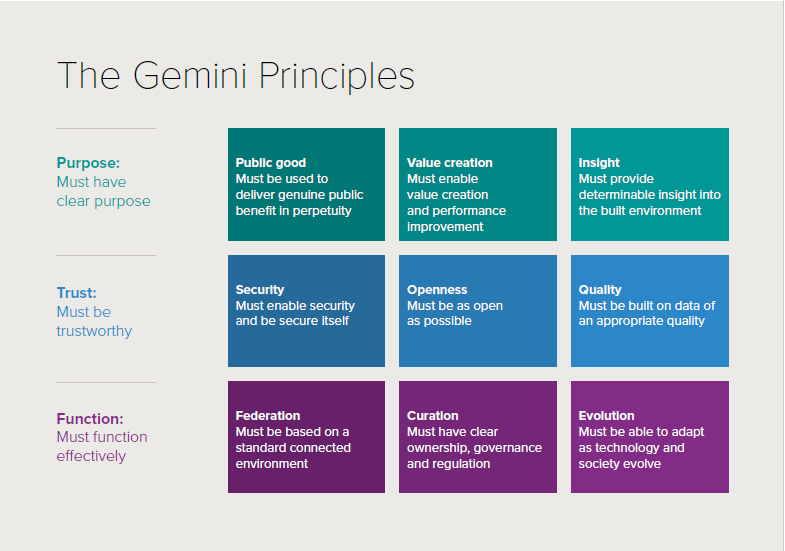Richard Shennan, digital business development director at Mott MacDonald takes a look at how digital twins offer a whole host of benefits for the AEC industry
There is much excitement about the idea of a digital twin across all parts of our industry. In 2016 it was identified by Gartner as a top trend for 2017, and they were certainly right in terms of the rise of the use of the term, which continued exponentially through 2018.
In reality though, few ‘mature’ digital twins yet exist in the built environment and infrastructure industries. Today’s position is that organisations need to focus on potential benefits of organised digital information that can be realised quickly, especially in view of the urgent need to increase efficiency, deliver enhanced social, economic and environmental outcomes and reduce risk.
Across the industry, there are many immediate and challenging problems that could be addressed by today’s technology, with the primary barriers being organisational structures and a culture of collaborative working around a common data set. Even entry-level digital information models can yield significant benefits if these barriers can be lowered.

By setting out an organisational strategy for a mature digital twin, these early steps can be along a defined pathway, building value at each stage. The need to focus on purpose, along with security and openness, are central to the Gemini Principles, published by the Centre for Digital Built Britain (CDBB) in 2018 to establish a standard approach. The vision is for an interconnected or federated world of digital twins that can combine at system, city or even national scale.
The building blocks of a digital twin for individual buildings or for wider scale neighbourhoods, systems and infrastructure always include a graphical element. The technology to provide this is mature, ranging from models of new buildings delivered in interactive 3-D format as part of the contractor’s delivery, to rapid context capture using drones, standing scanners and even personal mobile devices. Wider context is readily available in established GIS technology through organisations like Ordnance Survey. A key consideration here is not to confuse a realistic-looking geospatial model with a high-quality digital twin. Indeed, to overburden models with a level of graphical detail which is unnecessary for the purpose is to make a digital twin unnecessarily bulky and awkward to use.
The next step in considering the components of the twin is to determine what level of non-graphical information and documentation is required concerning the characteristics of building component parts or systems. This typically includes both static and dynamic data. A true digital twin collects live information regarding the condition and performance of things and feeds it into the platform where the twin lives, generating live reports and dashboards with a layer of analytics behind them. An essential starting point is to develop a single source of always accurate data, geolocated, and available in a secure manner to those that can benefit from it, when and where they need it.
Whenever failures occur, from misjudged investments that waste public money, through unintended negative social or environmental impact of interventions, to major disasters with devastating human consequences, there is reflection on the ‘what if’ scenarios, usually including reference to the availability of information in one form or another. One can view the responsibilities of those involved in the regulation, planning, design, construction and through-life operation and maintenance of our built environment as an ongoing series of decisions. The ‘what if’ considerations then centre on how decisions might have been better made if more meaningful and accurate information were available and taken into consideration. A first step towards creating a meaningful digital twin is therefore to look at the roles and decision-making structures in the organisation that is intending to invest in the twin to fulfil its objectives.
If the purposes for which the development of a digital twin can be articulated, then the related decision-making can be mapped. Implementing organisations must look at how they are currently managing data and develop an information-centric approach that may require changes in responsibilities. The digital twin strategy always needs to start from the present, and deliver quick wins based on current data as well as setting out the road map for incorporation of wider data sets both static and dynamic. For the purposes to be fulfilled, role-based decision-support tools such as dashboards must be developed, providing insights that enable actions and positive social, economic and environmental impact.
In the world of planning and building control, the opportunities could not be clearer. The first step of developing a single source of always accurate information about physical assets, their location, and related documentation to be updated as changes occur in design, construction and operation, would be a huge step forward. There is the potential to go beyond static into dynamic information, to gather live data from buildings and the wider built environment, interpret it, and bring it into ongoing decisions in pursuit of reduced risk and a better future. This is only limited by our ability to shape and manage organisational structures that can take advantage of increasingly mature digital twins. At a time when all of us in the industry need to show that we can respond to harrowing failures such as Grenfell and future challenges such as carbon reduction, the successful application of digital transformation to make better decisions is a responsibility that we all share.
Richard Shennan
Digital business development director
Mott MacDonald
Twitter: @MottMacDonald














